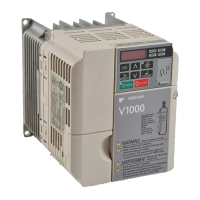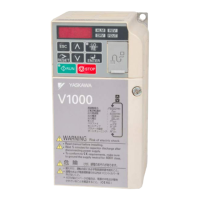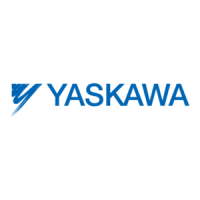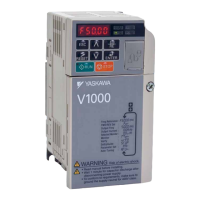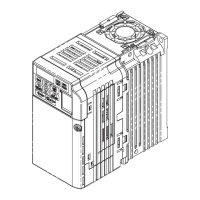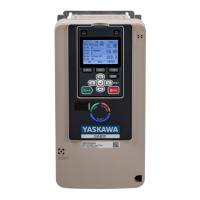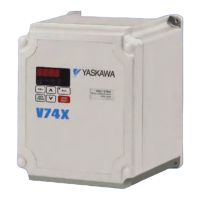2-10
DIGITAL OPERATOR
DESCRIPTION KEY SEQUENCE DISPLAY
Table 2-2. V/f Startup Procedure - Continued
Test run the drive from the
Digital Operator
WARNING:The next key press will cause
the motor to turn! Take appropriate safety
precautions!
Press the key then slowly turn the
Digital Operator Pot to the right about 1/4 of a
turn. The display on the drive will show the
actual motor amps.
Operation checkpoints:
• Motor rotates smoothly
•Motor rotates in correct direction. (If motor
does not rotate in the proper direction,
stop the motor and remove power from the
Drive. Switch motor connections T1 (U)
and T2 (V) at the Drive to change direc-
tion).
•Motor has no abnormal vibration or noise.
• Acceleration and deceleration are smooth.
• Unit is not overloaded. (Displayed current
does not exceed drive rated current).
Press the key.
This completes the startup.
Make further programming
changes as required.
(1)
The number in the display may be different than shown.
Prepare to test run the
drive from the Digital
Operator. Motor should be
disconnected from the load.
This will set the drive into the
“Local” mode, and bring up
the motor current display.
Press several times until the “LO/RE”
LED is lit.
Display the drive’s output current by pressing
four times. Turn the Digital Operator
Pot all the way to the left (counter-clockwise).
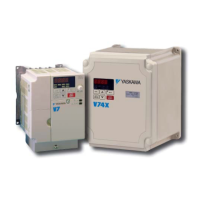
